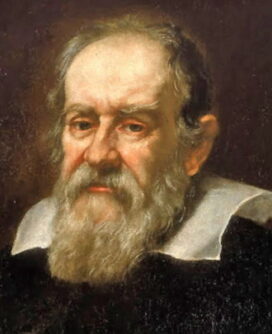Facts about Galileo Galilei
Galileo Galilei Biography
Galileo Galilei was an Italian scientist whose work in the 17th century helped unlock many secrets of astronomy and natural motion. His successes were so great that he is known simply by the name Galileo.
Galileo’s achievements include: building the first high-powered astronomical telescope; inventing a horse-powered pump to raise water; showing that items of different weights fall at the same velocity in a vacuum; describing the true parabolic paths of cannonballs and other projectiles; coming up with the ideas behind Newton’s laws of motion; and confirming the Copernican theory of the solar system.
Galileo was a professor of mathematics at the University of Padua from 1592-1610. Because he believed that the planets revolved around the sun, and not the Earth, Galileo was denounced as a heretic by the church in Rome. He faced the Inquisition and was forced to renounce those beliefs publicly, though later research, of course, proved his theories correct.
Galileo’s works include Sidereus Nuncius (The Sidereal Messenger, 1610), Il saggiatore (The Assayer, 1623), and Dialogo sopra i due massimi sistemi del mondo tolemaico, e copernicano (Dialogue Concerning the Two Chief World Systems, 1632).
Extra credit
The Vatican officially recognized the validity of Galileo’s work in 1993… After being forced to renounce his beliefs that the Earth revolves around the sun, Galileo is said to have uttered the phrase “E pur si muove” — that is, “And yet it moves”… Others had invented very low-power telescopes before Galileo, but he refined and improved the idea so greatly that he is generally considered the inventor of the modern telescope.
Related Biographies
Something in Common with Galileo Galilei
4 Good Links
- A bio, timeline, and other tidbits; good spot for students and teachers
- Big archive of his writings (translated as needed) from OpenLibrary.org
- PBS companion piece with chronology and background
- Wikipedia has all the details on his (correct) insistence that the Earth circled the sun

